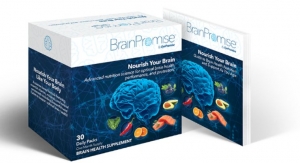By Sean Moloughney, Editor05.01.23
Globally, over the last several decades, governments and international aid groups have made significant progress in improving the health of young children. The World Health Organization (WHO) noted the number of children dying before the age of 5 was cut in half from 2000 to 2017 due to efforts aimed at fighting child poverty and diseases like neonatal disorders, pneumonia, diarrhea, and malaria. Progress though, has not been equal or equitable among or within countries.
Meanwhile, childhood obesity is one of the most serious public health challenges of the 21st century, according to WHO, citing a shift in diet toward foods high in calories, fat, and sugars but low in vitamins, minerals, and other micronutrients. Unhealthy, sedentary lifestyles and decreased physical activity compound the problem.
Inequality and impacts of climate change are also imperiling the health of children and their future, according to WHO. Disease, pollution, conflict, migration, and violence are all real and present dangers resulting from the climate crisis.
In response to COVID-19, enhancements to the Child Tax Credit (CTC)—designed to maximize investment in the most vulnerable children and their families—lifted 5.3 million people out of poverty, including 1 million children under 6 and 1.9 million children aged 6 to 17, according to government statistics.
In 2021, the official poverty rate was 11.6% for the nation overall, and SPM was 7.8%. Child poverty fell from 9.7% in 2020 (representing about 7 million children) to 5.2% in 2021. Income inequality, however, increased in 2021 for the first time since 2011.
Children of color, who are disproportionately poor due to racist policies, also experienced historically low SPM rates in 2021, noted Francine J. Lipman, a law professor at the University of Nevada, Las Vegas (UNLV) and a member of the Human Rights Magazine editorial board.
“The CTC reduced the 2021 child SPM poverty rate to 8.4 percent from 14.9 percent for Hispanic children (716,000 children); to 8.1 percent from 14.9 percent for Black children (1.2 million); to 2.7 percent for white children (820,000 children); and to 5.1 percent for Asian children (110,000 children). While these reductions are exceptional, they also evince the enormous disparities in poverty between white children and children of color,” Lipman wrote in January 2023.
Congress declined to extend the CTC enhancements beyond 2021, and the effects were immediately apparent. “The January 2022 monthly child poverty rate increased by more than 40 percent to 17 percent in January 2022, the highest rate since the end of 2020 representing 3.7 million children falling into poverty,” Lipman wrote. “Latinx and Black children experienced the largest increases in poverty (7.1 percent and 5.9 percent, respectively).”
According to First Focus on Children, a bipartisan advocacy organization dedicated to making children and families a priority in federal policy and budget decisions, while children make up nearly a quarter of the U.S. population, less than 7.5% of federal spending went toward children in FY2020.
Overweight and obesity can correlate with being deficient in essential vitamins and minerals such as iron, calcium, magnesium, zinc, copper, folate, and vitamins A and B12. Low intakes of these nutrients can lead to development of chronic diseases and conditions, such as type 2 diabetes, iron-deficiency anemia, stunted growth and even scurvy (lack of vitamin C) and rickets (lack of vitamin D and calcium).
Given this understanding, what role might dietary supplements play in improving public health of children in the U.S. and around the world?
The Supplemental Nutrition Assistance Program (SNAP) is the nation’s largest anti-hunger program. Nearly three-quarters of adults who participate in SNAP are low-wage workers, and close to two-thirds of SNAP recipients are children, elderly, or disabled.
Congress temporarily increased SNAP benefits in March 2020. The extra money prevented widespread hunger and helped families manage other household expenses, but that enhancement ended in March 2023 for more than 16 million families.
While billed as a program to “provide nutrition benefits to supplement the food budget of needy families so they can purchase healthy food and move towards self-sufficiency,” SNAP recipients are not allowed to use their benefits to purchase dietary supplements such as multivitamins.
According to the Council for Responsible Nutrition (CRN): “Multivitamin-minerals are a safe, convenient, and scientifically supported way to fill essential nutrient gaps. For some population groups, supplemental intakes are specifically recommended as a preferred means of obtaining certain nutrients, and a multivitamin-mineral would cover many of those needs. These products represent a cost-effective public health solution to deliver adequate amounts of essential vitamins and minerals. Their widespread use helps to ensure adequate nutrition for millions of Americans and contributes to reductions in the risk of several chronic diseases, reducing health care costs for all Americans.”
Additionally, vitamins and supplements don’t count as expenses covered by Americans’ health savings accounts (HSAs) or flexible spending accounts (FSAs), aside from exceptions such as if they’re prescribed with a letter of medical necessity and used to treat a medical condition.
Under current law, FSAs and HSAs allow employees to put aside money before it has been taxed to pay for healthcare costs related to medical care, prescription drugs, dental and vision care, over-the-counter medications, menstrual products, and other items.
However, a recent survey conducted by Ipsos that was commissioned by CRN and Consumer Healthcare Products Association (CHPA) found that 78% of Americans believe all supplements should receive automatic coverage.
A separate study commissioned by CRN revealed that tens of billions of dollars might be saved annually if target populations used specific supplements for the prevention of common conditions.
For example, if target populations for childhood cognitive development disorders were to take choline at preventive intake levels, an estimated 57,128 avoidable medical events would be prevented, the authors projected, resulting in $1.08 billion in net savings.
Founded by Howard Schiffer in 1994, drawing on his experience as a midwife and his success in the natural products industry, Vitamin Angels delivers evidence-based interventions and offers technical assistance, including ongoing monitoring and evaluation, to ensure program quality, scale, and impact.
The nonprofit aims to double its impact to reach 140 million women and children annually by 2033.
Meanwhile, childhood obesity is one of the most serious public health challenges of the 21st century, according to WHO, citing a shift in diet toward foods high in calories, fat, and sugars but low in vitamins, minerals, and other micronutrients. Unhealthy, sedentary lifestyles and decreased physical activity compound the problem.
Inequality and impacts of climate change are also imperiling the health of children and their future, according to WHO. Disease, pollution, conflict, migration, and violence are all real and present dangers resulting from the climate crisis.
The Poverty Seesaw
In the U.S., there are about 73 million children living under the age of 18, making up about 22% of the population, according to 2020 data from the U.S. Census Bureau, which calculates poverty estimates in two ways: the “official poverty rate,” and the “Supplemental Poverty Measure” (SPM), which accounts for taxes and government programs.In response to COVID-19, enhancements to the Child Tax Credit (CTC)—designed to maximize investment in the most vulnerable children and their families—lifted 5.3 million people out of poverty, including 1 million children under 6 and 1.9 million children aged 6 to 17, according to government statistics.
In 2021, the official poverty rate was 11.6% for the nation overall, and SPM was 7.8%. Child poverty fell from 9.7% in 2020 (representing about 7 million children) to 5.2% in 2021. Income inequality, however, increased in 2021 for the first time since 2011.
Children of color, who are disproportionately poor due to racist policies, also experienced historically low SPM rates in 2021, noted Francine J. Lipman, a law professor at the University of Nevada, Las Vegas (UNLV) and a member of the Human Rights Magazine editorial board.
“The CTC reduced the 2021 child SPM poverty rate to 8.4 percent from 14.9 percent for Hispanic children (716,000 children); to 8.1 percent from 14.9 percent for Black children (1.2 million); to 2.7 percent for white children (820,000 children); and to 5.1 percent for Asian children (110,000 children). While these reductions are exceptional, they also evince the enormous disparities in poverty between white children and children of color,” Lipman wrote in January 2023.
Congress declined to extend the CTC enhancements beyond 2021, and the effects were immediately apparent. “The January 2022 monthly child poverty rate increased by more than 40 percent to 17 percent in January 2022, the highest rate since the end of 2020 representing 3.7 million children falling into poverty,” Lipman wrote. “Latinx and Black children experienced the largest increases in poverty (7.1 percent and 5.9 percent, respectively).”
According to First Focus on Children, a bipartisan advocacy organization dedicated to making children and families a priority in federal policy and budget decisions, while children make up nearly a quarter of the U.S. population, less than 7.5% of federal spending went toward children in FY2020.
Dietary Insufficiency / Modern Malnutrition
In general, Americans are overfed and undernourished. The negative health effects of being overweight or obese have been well documented. Evidence also suggests obesity is a risk factor for a number of nutritional deficiencies.Overweight and obesity can correlate with being deficient in essential vitamins and minerals such as iron, calcium, magnesium, zinc, copper, folate, and vitamins A and B12. Low intakes of these nutrients can lead to development of chronic diseases and conditions, such as type 2 diabetes, iron-deficiency anemia, stunted growth and even scurvy (lack of vitamin C) and rickets (lack of vitamin D and calcium).
Given this understanding, what role might dietary supplements play in improving public health of children in the U.S. and around the world?
The Supplemental Nutrition Assistance Program (SNAP) is the nation’s largest anti-hunger program. Nearly three-quarters of adults who participate in SNAP are low-wage workers, and close to two-thirds of SNAP recipients are children, elderly, or disabled.
Congress temporarily increased SNAP benefits in March 2020. The extra money prevented widespread hunger and helped families manage other household expenses, but that enhancement ended in March 2023 for more than 16 million families.
While billed as a program to “provide nutrition benefits to supplement the food budget of needy families so they can purchase healthy food and move towards self-sufficiency,” SNAP recipients are not allowed to use their benefits to purchase dietary supplements such as multivitamins.
According to the Council for Responsible Nutrition (CRN): “Multivitamin-minerals are a safe, convenient, and scientifically supported way to fill essential nutrient gaps. For some population groups, supplemental intakes are specifically recommended as a preferred means of obtaining certain nutrients, and a multivitamin-mineral would cover many of those needs. These products represent a cost-effective public health solution to deliver adequate amounts of essential vitamins and minerals. Their widespread use helps to ensure adequate nutrition for millions of Americans and contributes to reductions in the risk of several chronic diseases, reducing health care costs for all Americans.”
Additionally, vitamins and supplements don’t count as expenses covered by Americans’ health savings accounts (HSAs) or flexible spending accounts (FSAs), aside from exceptions such as if they’re prescribed with a letter of medical necessity and used to treat a medical condition.
Under current law, FSAs and HSAs allow employees to put aside money before it has been taxed to pay for healthcare costs related to medical care, prescription drugs, dental and vision care, over-the-counter medications, menstrual products, and other items.
However, a recent survey conducted by Ipsos that was commissioned by CRN and Consumer Healthcare Products Association (CHPA) found that 78% of Americans believe all supplements should receive automatic coverage.
A separate study commissioned by CRN revealed that tens of billions of dollars might be saved annually if target populations used specific supplements for the prevention of common conditions.
For example, if target populations for childhood cognitive development disorders were to take choline at preventive intake levels, an estimated 57,128 avoidable medical events would be prevented, the authors projected, resulting in $1.08 billion in net savings.
Vitamin Angels
As a public health nonprofit working to improve nutrition and health outcomes in low-resource settings around the world, Vitamin Angels works with over 1,200 local organizations, including governments, to reach more than 71 million women and children in about 65 countries annually.Founded by Howard Schiffer in 1994, drawing on his experience as a midwife and his success in the natural products industry, Vitamin Angels delivers evidence-based interventions and offers technical assistance, including ongoing monitoring and evaluation, to ensure program quality, scale, and impact.
The nonprofit aims to double its impact to reach 140 million women and children annually by 2033.




























